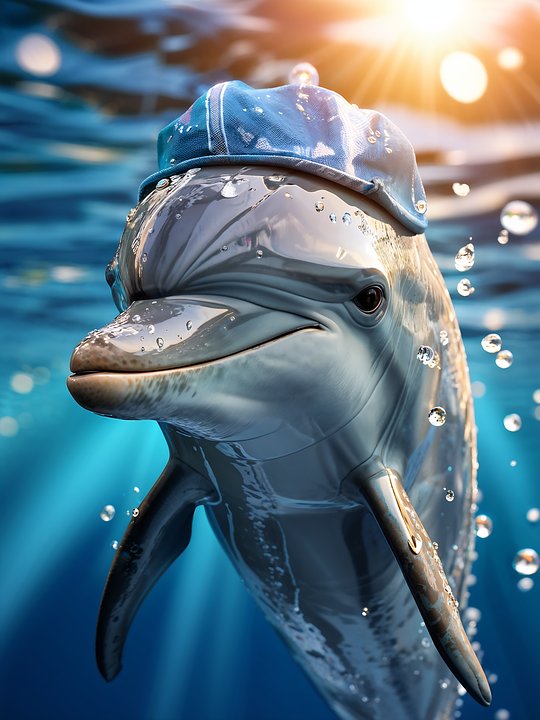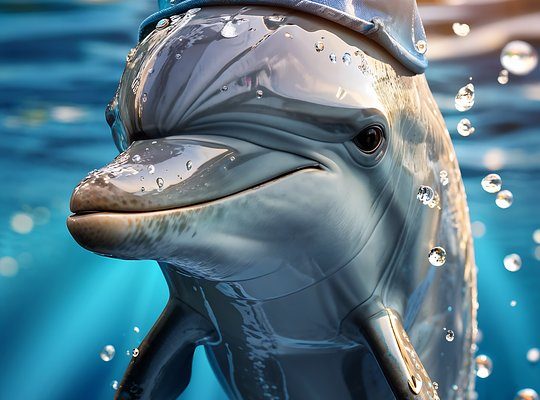
These dolphins, known for their energetic acrobatics, are more than just a pretty sight. They play a vital role in marine ecosystems. Climate change affects not only the temperature of the water but also the availability of food and their habitats. It’s like a domino effect—when one thing changes, everything else tends to follow suit. Let’s dive into how climate change is impacting spinner dolphins, and why understanding this matters to all of us.
The Basics of Spinner Dolphins
Before we get into the nitty-gritty of climate change, let’s chat about what makes spinner dolphins so special. These dolphins are small to medium-sized, usually around 6 to 7.5 feet long. They’re best known for their remarkable spinning leaps—performing flips that can leave spectators in awe. Typical habitats for spinner dolphins include warm, tropical oceans, primarily found in waters near islands and coastlines.
What’s fascinating is their social behavior. They live in pods that can consist of just a few members to over a hundred. Imagine being part of a close-knit community where everyone communicates through clicks and whistles. That’s the spinner dolphin life! But with their habitat changing, these social dynamics can be disrupted, leading to potential issues with mating and social structure.
Rising Ocean Temperatures
One of the most noticeable impacts of climate change is the increase in ocean temperatures. Think of it like a hot bath—after a while, it’s just too uncomfortable to stay in. Spinner dolphins are accustomed to specific water temperatures, usually thriving in warmer conditions. However, as temperatures rise beyond their comfort zone, it affects their ability to hunt and breed.
Warmer waters can lead to less oxygen in the water, which is essential for the entire marine ecosystem. If there’s less oxygen, it can mean fewer fish. Without a plentiful food source, spinner dolphins may struggle to find enough to eat. This situation can lead to malnutrition and lower reproductive rates, causing a ripple effect on their populations.
Changing Food Sources
Now, let’s talk about food. Spinner dolphins mainly feast on small fish and squid. With changing ocean temperatures, the migration patterns of these prey species are also shifting. Imagine a buffet that suddenly rearranges itself—while some dishes are still available, your favorites might not be there anymore. This is what spinner dolphins are facing.
As fish populations move to cooler waters, dolphins may find themselves having to venture further to locate food. This extra travel can lead to increased energy expenditure, which is not ideal when they’re already facing challenges from rising temperatures. Plus, competition with other marine predators can intensify, making survival even trickier.
Ocean Acidification
Here’s the thing about climate change: it doesn’t only warm up the oceans; it also changes their chemistry. Ocean acidification occurs when excess carbon dioxide in the atmosphere dissolves into the sea, making it more acidic. This change can have dire consequences for many marine species, especially shellfish and coral reefs, which spinner dolphins rely on for food and habitat.
With less healthy coral reefs, the entire ecosystem suffers. Think of coral reefs as bustling underwater cities. As these cities deteriorate, the food web that spinner dolphins depend on also collapses. If their food sources diminish, it threatens the very existence of these playful dolphins, creating a worrying scenario for ocean biodiversity.
Habitat Loss and Degradation
Climate change isn’t just altering water temperatures; it also affects the physical environments where spinner dolphins reside. Coastal development, pollution, and increased storm activity—all exacerbated by climate change—lead to habitat loss and degradation. When these vibrant underwater neighborhoods become unsafe, it’s like losing a home.
The degradation of marine habitats can make it more difficult for spinner dolphins to find safe havens for breeding and nurturing their young. This loss of habitat can also lead to increased interactions with humans, which can be stressful for these creatures. Enjoying their natural lives becomes even harder when they must navigate through disrupted environments.
Increased Human Interaction
As spinner dolphins become more desperate to find food and safe environments, they may come into closer contact with people, boats, and fishing activities. You might think that sounds exciting—from a distance, it can be! But these interactions can lead to stress for the dolphins, and it might even put them in direct danger.
Boating traffic can increase the risk of collisions, while fishing nets and traps can pose threats of entanglement. It’s like trying to live in a busy city when all you want is a quiet life by the seaside. When dolphins feel pressured or threatened by human activities, their natural behaviors can change, which could further impact their survival.
Conservation and Future Outlook
So, what can we do about it? Here’s the thing: the future of spinner dolphins—and many marine species—depends on how we tackle climate change. Conservation efforts are crucial. Simple actions, like reducing carbon footprints, protecting marine habitats, and advocating for sustainable fishing practices, can make a significant difference.
Organizations worldwide are working to raise awareness and implement protections for marine life. Supporting these initiatives helps create safer environments for spinner dolphins and other species. If we want to enjoy their joyful spins and flips for generations to come, we must ensure they have a safe place to call home.
In conclusion, climate change is affecting spinner dolphins in several profound ways—from rising ocean temperatures and shifting food sources to habitat loss and increased human interaction. Understanding these impacts helps highlight the urgency of addressing climate change not just for dolphins, but for the health of our oceans and the planet overall. It’s a collective effort, and every little bit counts. Let’s work together to protect the incredible spinner dolphins and preserve the vibrant underwater world they inhabit.

